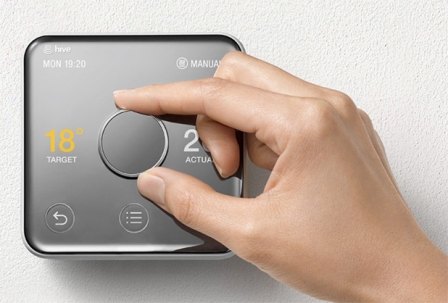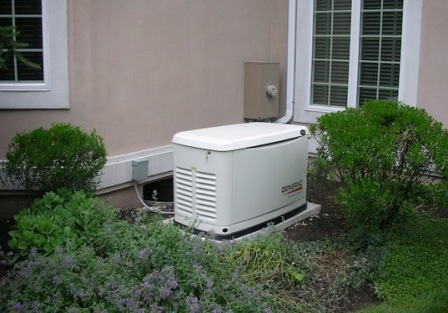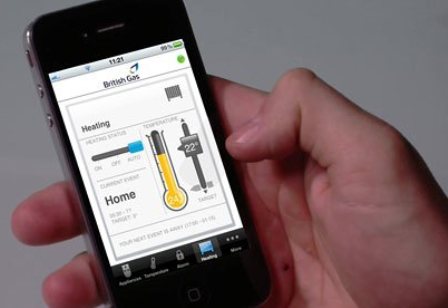Categories: Featured Articles » Home automation
Number of views: 17516
Comments on the article: 1
Smart home - what modern automation systems can do
Automation is increasingly being introduced into the everyday life of modern people. And if earlier, automated production could be considered the peak of progress, now even life, an apartment or a private house can be quite dramatically improved by bringing the concept of “smart home” there. Indeed, today the “smart home” systems are designed not only to optimize energy costs, but, first of all, to make a person’s life more comfortable. The capabilities of modern smart home systems will be discussed in our article.
Combine home cinema, lighting control, water supply, video surveillance system, climate control in one system fire alarm, power supply and access control, gas supply and multiroom - this is the task that the smart home system solves today. Let’s go through each of the items sequentially, consider what modern automation systems can apply to our everyday life.
Climate control
The microclimate of public and residential premises greatly affects our performance, and indeed health in general. The air conditions in the rooms vary depending on the operating conditions of the climatic equipment. Heating and ventilation equipment, lighting equipment, other appliances - all this together has a certain cumulative effect on the human body, on well-being, on health in the end. And the technique is getting harder.

Automated systems allow us not only to quickly monitor and control all this equipment, but ultimately take care of our health. With the help of sensors, the current state of the air in the room is monitored, and through the control panels, the operation modes of the air conditioners and the supply ventilation are adjusted, warm floor and heating. That is, the climate is automatically adjusted to the requirements of a person, which are set by preliminary settings.
So climate control allows the following. Air quality control depending on the weather outside the window and the time of day. Timely ventilation of rooms by controlling heating and opening windows.
Management of the warm floor. Maintaining optimal temperature and humidity individually in each room. For example, a food storage room requires its own special climate, which differs from the climate in the living room or in the kitchen, etc.
Temperature, humidity, fresh air intake, air purification and ozonation control. In each room, the conditions should be their own, most suitable for each family member, taking into account the place in the house where this room is located: some north, some south - and the management in each case will be individual.
Drafts are unacceptable in the nursery, the bedroom should be warmer, in the bathroom the floor should be warmed up on time, and you do not need to keep it warm all the time. That is, the control turns out optimal so that the effect of energy saving would also take place.
The setting varies according to the lifestyle of the family or team. On weekends, the heat supply to the working rooms is reduced or turned off.
Autonomous heating system of a country house - on the contrary, it turns on for the weekend. The boiler is remotely switched on or switched to an economical mode, etc. Everything is rationalized to combine economics and comfort of life. This is especially true for water, electricity and heat.
Entertainment
For a long time you will not surprise anyone with a home theater.But to control sound and video from different places, as well as stereo systems located throughout the apartment - these functions are just implemented using the "smart home" system.
The home theater is connected to an automated system, and the entire complex of multimedia equipment, together with auxiliary devices, harmoniously integrates into the apartment. There can be several sources of sound and video, and they can be multi-channel: speakers, receivers, plasma panels, projectors - everything is controlled directly or remotely from anywhere in the room.

You can watch movies and programs, listen to music in all rooms or in only a few, program the script and activate it with one button from the touch panel or remote control. The script program can be entered into individual conditions: the blinds are closed, the light goes out or becomes less intense, the plasma panel turns on, the projector extends, and the player starts.
Script programs can be edited, timed to automatically start, set related settings for watching movies, for example, turn on the air conditioner near the place where the home theater is installed, if the weather is hot.
The multiroom function is just that function that allows you to hear sound or watch video in several independent areas of the apartment. It becomes possible to adjust the volume from any room, each of which has button or touch, wall or desktop control panels, as well as remote controls.
Lighting control
What could be a more expressive sign of the smart home system intelligence than smart lighting control? Lighting in a “smart home” is truly smart and therefore economical. Electricity resources in an apartment, in a house or in an office are used as economically as possible, without unnecessary wastefulness.

The advantage of an automated lighting control system is that, based on data from sensors of external and external lighting, as well as on timer data, it allows you to turn on and off the light of the desired brightness and only where it is really needed. Also light scenes open up wide scope for creativity. In addition, the option of simulating the presence of the hosts is available.
Power management
The modern “smart home” system is a complex of technologies of comfort, safety and economy. Stability through integration uninterruptible power supplies in the event of a centralized power outage so that the electronics always remains operational.

Rechargeable batteries and inverters, chargers and liquid fuel generators are installed in the system and are integrated software. At the time of a power outage, the system will automatically switch to a backup source, in extreme cases, safety systems and the most important equipment will remain powered from the batteries.
Automated Security System
The “smart home” system includes, as part, a fire alarm and video surveillance, so that both the owners' stay in the house and their absence would be safe both for the house and for the owners themselves. Here, a video intercom and a perimeter security system can be installed to protect against uninvited guests.
As for security in general, the Smart Home system is able to provide: protection against short circuits in the wiring, protection against water leaks, protection against gas leaks, fire protection through the operation of the smoke sensor and the inclusion of an autonomous fire extinguishing system, autonomous power supply, alarm, automatic call of the rescue service.
So, the “smart home” will protect itself and its owners from any dangerous situations, because the system can include: automated gates and doors, automatic protective shutters, video surveillance system, burglar alarm, presence sensors, smoke, gas leaks, etc.
Control of access to the premises, video surveillance of the adjacent territories, the inclusion of spotlights when penetrating through the perimeter are three more advantages to the piggy bank of merits. Through the Internet, the host will be able to remotely receive a picture from any of the cameras of the video surveillance system, the function of the baby monitor can also be attributed to this.
Video surveillance as such

Intelligent video surveillance is one of the main components of modern “smart homes”. Video cameras connect to the Internet, and allow you to access yourself from anywhere in the world.
The owner can be abroad, while quickly observing any of the zones, and the cameras here can be controlled. For example, wickets, courtyards located nearby buildings, and platforms near the doors of apartments are usually equipped with controlled cameras. The operation of the camcorder can be paired with a motion sensor, and signals can be fed to the control center.
Television, Internet and cellular
The Internet and satellite television networks, as the main sources of information, are conveniently integrated today in smart home systems. Being inside the house, the owner can receive information and send it to various rooms, on TVs and monitors. This also applies to the transmission of information received from video surveillance systems. Thanks to the multiroom function, all these possibilities are opened. Of course, via the Internet it is possible to configure remote control if desired.

Management from a mobile phone through direct voice commands and via SMS is available today for owners of Smart Home systems. You can also set up call forwarding and intercom calls on your mobile phone if you are away from home, even when you are in another country.
If necessary, you can let guests into the house simply by sending the appropriate command from your mobile phone to your automated system. Similar opportunities are conveniently implemented through the Internet, it will be enough to find Wi-Fi for a smartphone or laptop.
See also at bgv.electricianexp.com
:
